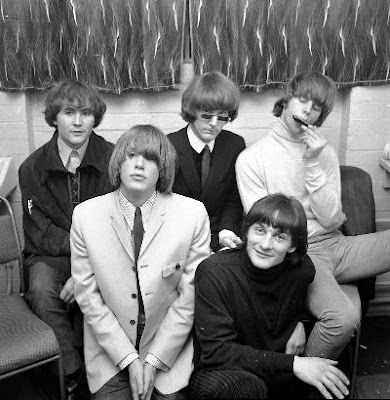

While performing at the Troubadour folk club in Los Angeles, McGuinn was approached by fellow Beatles fan Gene Clark, and the pair soon formed a Peter and Gordon-style duo, playing Beatles' covers, Beatlesque renditions of traditional folk songs, and some self-penned material. By early 1964, McGuinn had become enamored with the music of the Beatles, and had begun to intersperse his solo folk repertoire with acoustic versions of Beatles' songs.
#The byrds bob dylan professional
McGuinn had also spent time as a professional songwriter at the Brill Building in New York City, under the tutelage of Bobby Darin. In addition, they had all served time, independently of each other, as sidemen in various "collegiate folk" groups: McGuinn with the Limeliters and the Chad Mitchell Trio, Clark with the New Christy Minstrels, and Crosby with Les Baxter's Balladeers. All three musicians had a background rooted in folk music, with each one having worked as a folk singer on the acoustic coffeehouse circuit during the early 1960s.


The nucleus of the Byrds formed in early 1964, when Jim McGuinn, Gene Clark, and David Crosby came together as a trio. Gene Clark recalling the encounter at the Troubadour folk club in Los Angeles that marked the genesis of the Byrds We went into the lobby and started picking on the stairway where the echo was good and David came walking up and just started singing away with us doing the harmony part. McGuinn and I started picking together in The Troubadour bar which was called "The Folk Den" at the time. McGuinn, Crosby, and Hillman remain active. Gene Clark died of a heart attack later that year, while Michael Clarke died of liver failure in 1993. In 1991, the Byrds were inducted into the Rock and Roll Hall of Fame, an occasion that saw the five original members performing together for the last time. Several former members of the Byrds went on to successful careers of their own, either as solo artists or as members of such groups as Crosby, Stills, Nash & Young, the Flying Burrito Brothers, McGuinn, Clark & Hillman, and the Desert Rose Band. The Byrds' final album was released in March 1973, with the reunited group disbanding later that year. McGuinn disbanded the then-current lineup in early 1973 to make way for a reunion of the original quintet. McGuinn elected to rebuild the band's membership between 19, he helmed a new incarnation of the Byrds that featured guitarist Clarence White, among others. McGuinn and Hillman decided to recruit new members, including country rock pioneer Gram Parsons, but by late 1968, Hillman and Parsons had also exited the band. The Byrds continued as a quartet until late 1967, when Crosby and Clarke also departed. This version of the band was relatively short-lived and by early 1966 Clark had left due to problems associated with anxiety and his increasing isolation within the group. The original five-piece lineup of the band consisted of McGuinn ( lead guitar, vocals), Gene Clark ( tambourine, vocals), David Crosby ( rhythm guitar, vocals), Chris Hillman ( bass guitar, vocals), and Michael Clarke ( drums). The band also played a pioneering role in the development of country rock, with the 1968 album Sweetheart of the Rodeo representing their fullest immersion into the genre. As the 1960s progressed, the band was influential in originating psychedelic rock and raga rock, with their song " Eight Miles High" and the albums Fifth Dimension (1966), Younger Than Yesterday (1967) and The Notorious Byrd Brothers (1968). Tambourine Man" and " Turn! Turn! Turn!". Initially, the Byrds pioneered the musical genre of folk rock as a popular format in 1965, by melding the influence of the Beatles and other British Invasion bands with contemporary and traditional folk music on their first and second albums, and the hit singles " Mr. Their signature blend of clear harmony singing and McGuinn's jangly twelve-string Rickenbacker guitar was "absorbed into the vocabulary of rock" and has continued to be influential. Although their time as one of the most popular groups in the world only lasted for a short period in the mid-1960s, the Byrds are today considered by critics to be among the most influential rock acts of their era. The band underwent multiple lineup changes throughout its existence, with frontman Roger McGuinn (known as Jim McGuinn until mid-1967) remaining the sole consistent member. The Byrds ( / b ɜːr d z/) were an American rock band formed in Los Angeles, California, in 1964.


 0 kommentar(er)
0 kommentar(er)
